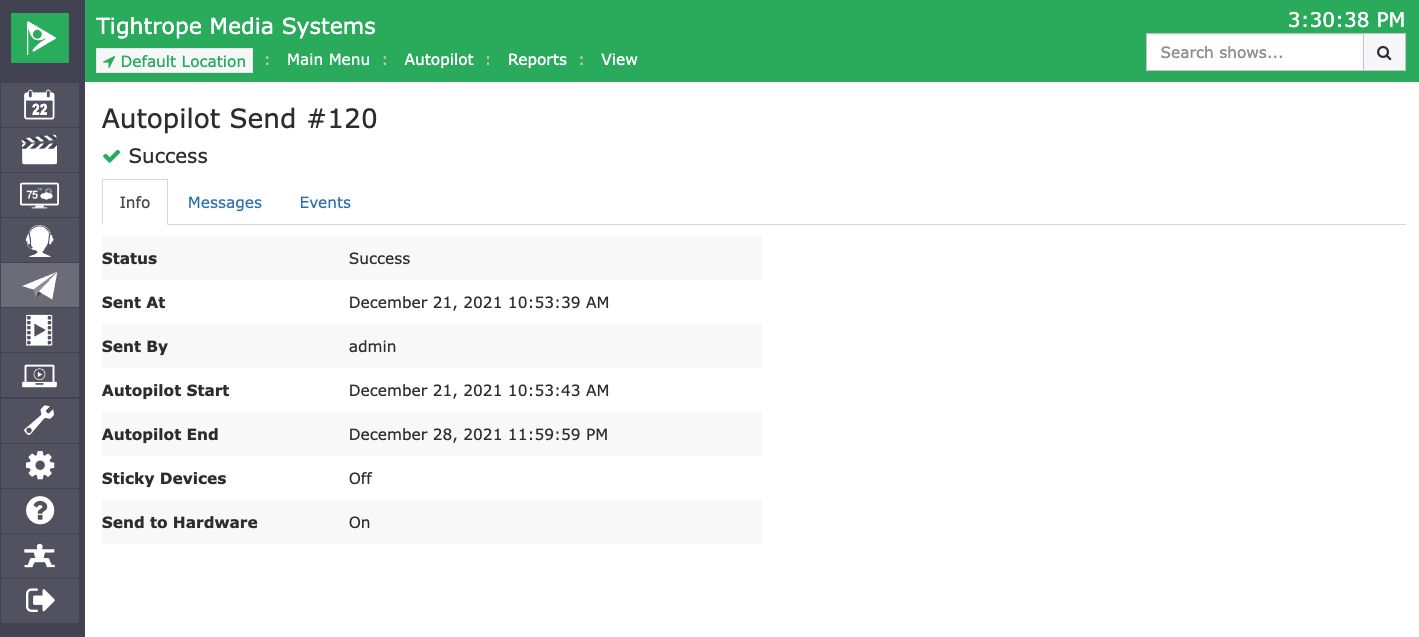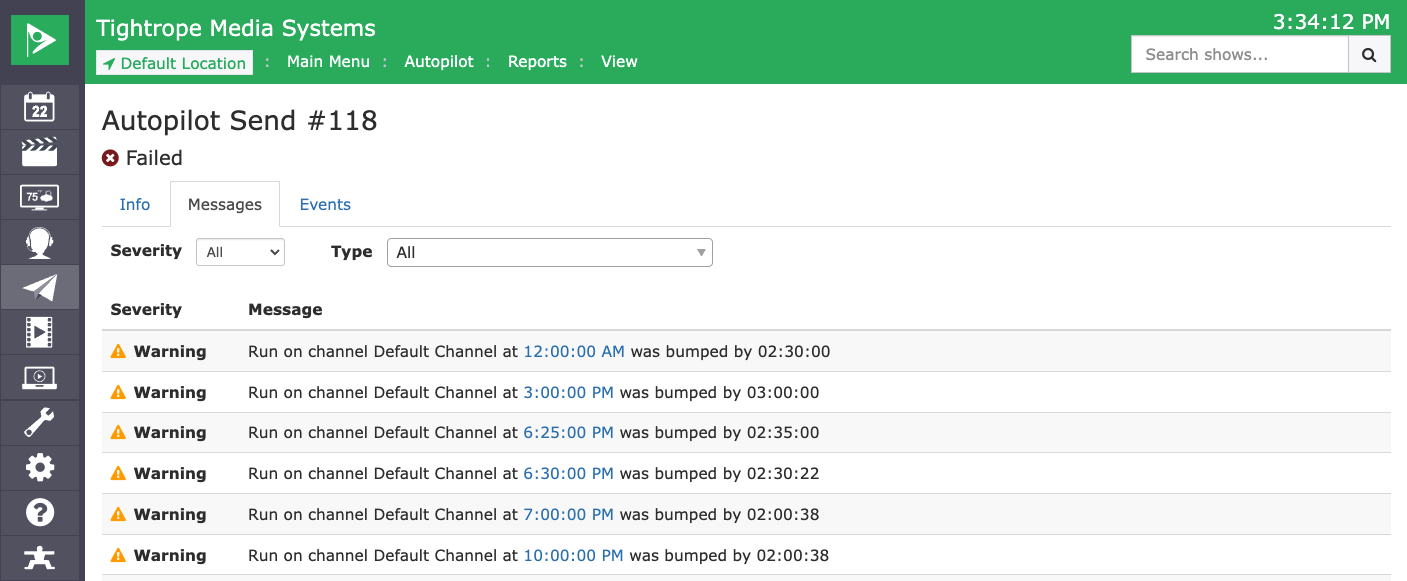Send Reports
Report List
When navigating to Autopilot / Autopilot reports, you'll be presented with a list of previously sent Autopilots. This list shows the previous 30 sends of which you can see some quick information regarding each send:
- The report ID number
- Status of the send
- Date range of the computed send
- Who sent autopilot
Clicking on the Report number will bring you into the summary of that report. If a send has failed or is showing warnings, you can see the breakdown in the report itself for some insight of what may have happened to cause that status.
Report View
Upon sending autopilot, or viewing a historical send, you'll be presented with a individual report view. This will give you insight into everything related to that Autopilot send, either if you sent it just now, or had sent it a month ago.
Across the top of the report, you'll see tabs to navigate around the report: Info, Messages and Events. Click on these tabs to navigate aroaund the report sections.
Info
Info gives you some basic information about the send.

This information includes:
| Item | Description |
|---|---|
| Status | The overall status of the send (More details below). |
| Sent At | At which time the send was sent by the user for computing. |
| Sent By | The username of the individual that made the send. |
| Autopilot Start | The range of the schedule that the autopilot started computing for. |
| Autopilot End | The range of the schedule that the autopilot has computed up until. |
| Sticky Devices | If sticky devices was defined as enabled / disabled. |
| Send to hardware | If send to hardware was defined as enabled / disabled. |
Statuses
The different statuses of a send are as follows:
| Status | Description |
|---|---|
| Queued | The report has been sent, and is in the process of running. This will stick around longer with larger Autopilot sends. |
| Success with Warnings | The send finished & is valid, but with some warnings about playout / events. Server playout shouldn’t be impacted too heavily by these warnings. |
| Success with Errors | The send finished & is valid, but with some problems that will impact the playout of your schedule. It's generally a good idea to review the messages, resolve the conflicts and resend Autopilot. |
| Success | The Autopilot sent without any warnings or errors. You’re in good shape! |
| Failed | There was an issue large enough that preventing the Autopilot from sending altogether. Review the messages to determine the cause, resolve the issue, and resend Autopilot. |
Messages
The messages tab will show you more information behind various different items within your report. Generally the messages provide you information about your run that may be relevant to your interests, or prompt you about items that may need to be resolved.

If your Autopilot report is busy with a lot of messages, you can filter down the messages to get to information you find most useful to you. The following filters are available for your use. The two filter criteria is as follows:
| Filter | Description |
|---|---|
| Severity | Sort messages depending on the Severity of the message. If the send failed, this defaults to show you only the failures. |
| Type | There are a lot of different message types in Cablecast, including things like Raid Issues, Disk space problems, Run bumps, Missing Files, etc. You can use (and search in) this dropdown to show only specific messages. |
Some Autopilot messages will even provide you with some contextual links to help you get to where you need to be to resolve the problem.
Example: A run bump will give you a timecode to jump to that location in the schedule. A show without a valid file will link you to that show record. Etc.
Events
The event table screen allows you to see the events that were generated as part of send in the report you are viewing. This screen is useful as a troubleshooting tool.

At the top of this screen, you can change the filter to show only specific events for a specific channel on your system.
This screen shows the following information:
| Item | Description |
|---|---|
| Date and Time | The time at which this event is to be executed. |
| Action | The name of the action that will be performed for this event. |
| Channel | Which channel the event is taking place on. |
| Device | Shows the name of the device that will be used for this event. |
| Output | For take Events, this column displays the name of the router output that will be used. |
| Show | The Show that generated this event. |